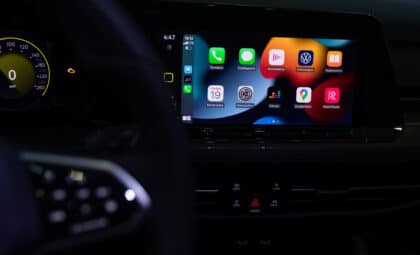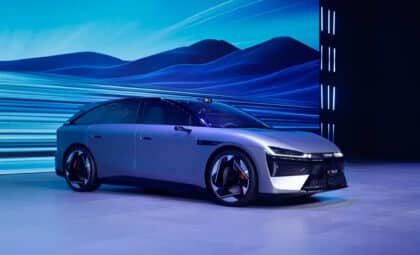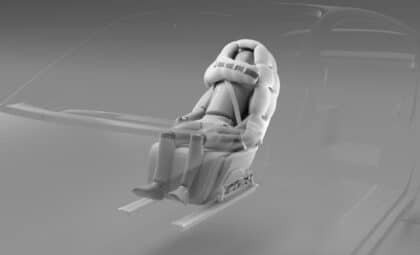The capsule was created in 1975 by businessman Harold Davisson, who wanted to preserve a slice of contemporary life for future generations. Items from the project were stored beneath his House of Davisson furniture store and left untouched until their scheduled opening in 2025. Among the preserved artifacts, the Vega quickly drew attention as the star attraction.
The unveiling, which took place on July 4, 2025, was covered by local outlet KLKN, which reported that the car was met with astonishment from those present. The daughter of the capsule’s creator, Trish Davisson Johnson, said she was impressed by how well the vehicle had endured its long confinement, noting that its colors remained vibrant after five decades underground.
A Brand New Chevy Vega after Half a Century
The Vega is a two-door notchback finished in bright yellow, with only minor signs of deterioration. Observers pointed out some rust on the hood, but the rest of the vehicle appeared to be in strikingly original condition.
Brief video footage showed the cabin still intact, and according to the same source, the car seems to feature a four-speed manual transmission. While it is unclear whether the car is equipped with the base 2.3-liter engine rated at 78 horsepower or the 87-horsepower two-barrel version, the odometer reading remains at zero, underscoring its untouched state.
The project wasn’t just a local gimmick. Harold Davisson, a furniture store owner with a passion for history, designed the time capsule as an ambitious preservation effort. He built a reinforced underground vault beneath a concrete pyramid, filled with over 5,000 items, including cassette tapes, Barbie dolls, and even a Pet Rock, all meant to offer a snapshot of American life in the mid-1970s.

Family Impressions of the Discovery
For the Davisson family, the reemergence of the Vega carried a personal dimension. “It was unbelievable to me that after 50 years, the colors were that bright and that the whole car was in that good of shape,” Trish Davisson Johnson told reporters during the unveiling.
Her father’s decision to bury the car as part of his ambitious time capsule project reflected both his eccentric vision and the role of the automobile in American culture at the time. The capsule also contained other items, including a blue Kawasaki enduro motorcycle, which also appeared well preserved.
The capsule’s opening was not only a remarkable public spectacle but also a deeply personal event for the local community. Many attendees had memories of the original burial ceremony, and some even recalled their excitement at the time.
Missing Records and a Fragmented Recovery
While most of the capsule’s contents were well preserved, the recovery process wasn’t without challenges. The original inventory list was lost in 1991, and a box of ownership receipts was stolen in the late 1990s. This has complicated efforts to return items to the original families who donated them.
Some of the items, including letters and paper goods, showed signs of water damage, but the majority of the collection managed to escape serious deterioration. This was thanks to the careful engineering of the time capsule’s underground vault, which protected its contents from the elements. According to Trish Davisson Johnson, it was her father’s focus on durability that ensured the capsule’s long-term success.
Despite these challenges, the recovery process also revealed some unexpected discoveries. In addition to the Vega, a Toyota Corolla was also buried, but it was removed a year early in 2024. The motorcycle, another artifact of the time, emerged from the capsule in working order alongside the Vega.
A Second Life for a Forgotten Icon
Following its unsealing, the Vega was started up and driven in Seward’s annual Independence Day parade, completing a symbolic journey from the past into the present. Local outlets like the Seward County Independent reported strong turnout, with many attendees recalling the original burial ceremony as children.









